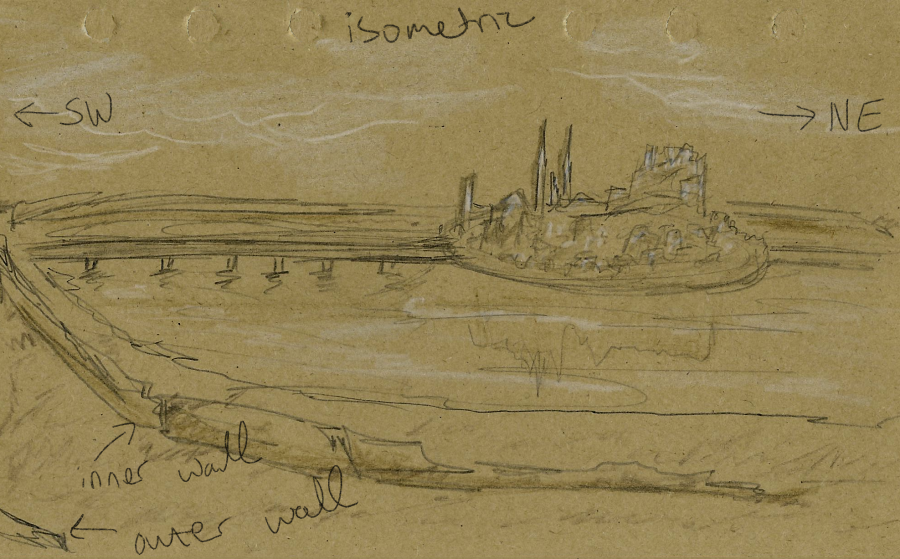Aman-Tal
Known as the Golden City, Aman-Tal was once the capital of human civilization as well as the location of The Storyteller, Veleda's, Great Library. The richest parts of the city were topped with gold, giving Aman-Tal its moniker. It was here that Adar first descended to the mortal world and began to choose his priests. In its time, Aman-Tal was a bastion of knowledge and arts.
That all ended when Aman-Tal was razed. Now, the Golden City is a ruined monument to the Age of Creation. Lagahashra’s beasts protect what remains, making the ruins a dangerous place. Despite the risks, mortals have made excursions into the wreckage of Aman-Tal since its destruction. When the Age of Conflict was freshly resolved, a brave souls led a series of unsuccessful resettlement attempts.
In the current age, archaeological explorers and treasure hunters periodically try to uncover the riches entombed in the crumbling city. This includes an expedition by the heroes of Apotheosis, who discovered a way to the Storyteller's Ancient Library (Arc 4: Silence is Golden).
The Scale of Gold
- The grounds of Aman-Tal cover an area of ~78 sq mi (202 sq km). The island measures ~12.5 mi at both its longest (NE to SE line) and at its widest extents (NW to SW line). For context, this is about the size of modern Washington D.C., about 2/3rd the size of modern Dublin; about 4/5ths the size of modern Frankfurt. The highest elevation of the island is 2.25 miles above ground-level.
- At the peak of Aman-Tal's power, the city extended off the island to the mainland shores. Construction on the old wall (inner wall) concluded just as construction on the outer wall (new wall) began. The hilly territory was used to maximum advantage when the ancient architects placed towers and gates, making the whole structure highly defensible. Both walls now lie in ruins, but the highest points of their crumbling remains can still be seen in some places.
Infrastructure
- The city was very advanced for its time, with streets aligned in grids whenever possible. Throughout its long history, the main thoroughfares needed repairs, but never needed widening. The gridded street pattern is most apparent in the lower city because of its bigger land area, but the trend is present at all elevations of the city.
- The Aman-Talites believed that faith raised the poor up and brought the rich down to earth. This cultural belief was the reason its religious center was in its physical center (i.e., the Great Library and major civic buildings were at the middle elevation, about halfway through the island). Otherwise, the most wealthy and powerful lived on high.
Districts
- The city consisted of four districts shaped like tessellating triangles. Each tristrict was a self-sufficient microcosm with schools, bathhouses, civic centers, marketplaces, transportation hubs, farms, manufacturing centers, cemeteries, etc.
- The districts' names have all been lost to time.
Points of interest
- The Great Library. Speaks for itself.
- Ka-Daerin Symphony Hall. Legends say that the creative energies of artists inspired by The First God, Adar, kept the city flourishing. The heart of the city’s artistic power was its symphony hall.
- The Aureuatium (Hall of Gold). One of the most astonishing buildings of its time, this was one of the throne rooms of Aman-Tal's head of state. The throne itself was set in an apse; above it was an image of a crown and an owl - homage to the city's primary gods. A curtain of silk woven with gold and ornamented with precious stones hung in front of the throne. Elsewhere in this grand hall, gold and silver banquet halls, couches, engraved plates, crowns, chandeliers, religions icons, and civic vestments flaunted Aman-Tal's wealth.
RUINED SETTLEMENT
-3000




Comments